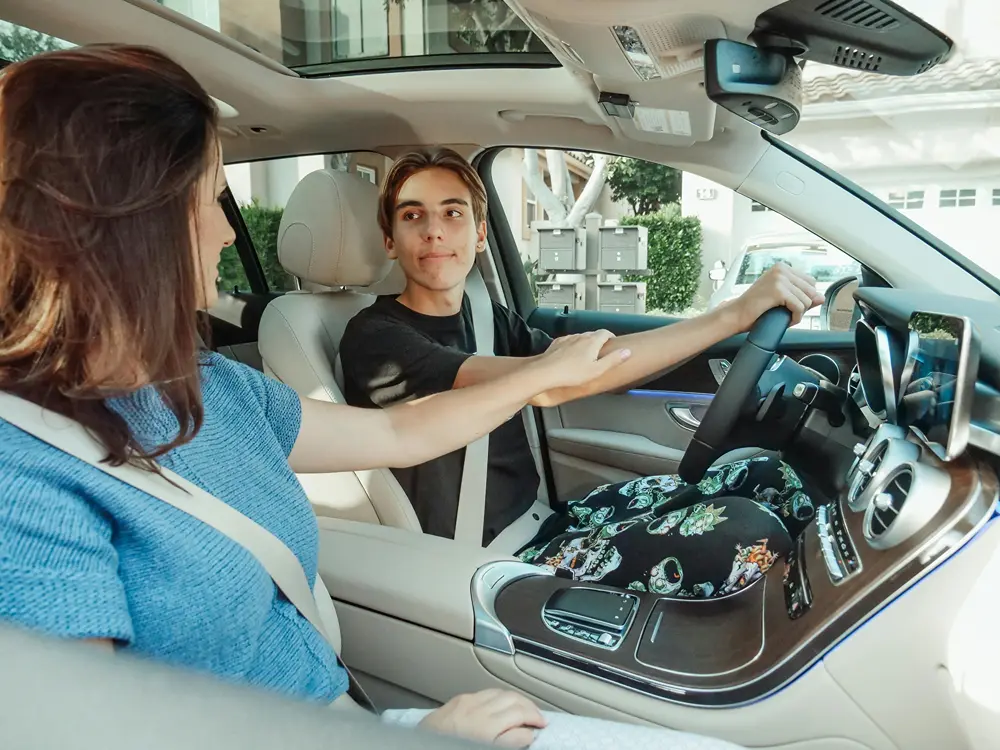Helping Your Teen Drive Safely with Court-Ordered Defensive Driving
When a teen is ordered to take a defensive driving course by the court, it marks a crucial step toward safer driving. Court-ordered classes typically aim to address behaviors linked to unsafe driving, such as speeding, distracted driving, or road rage.
These programs are designed to help teens correct their driving habits, avoid future violations, and develop better decision-making skills behind the wheel. A level 1 course is the first step and a level 2 traffic safety course is also a significant one. The former is apt for those with minor traffic violations while the latter is suitable for aggressive drivers.
As teens progress, more advanced defensive driving courses reinforce these concepts, helping them become responsible and cautious drivers.
Understanding Defensive Driving Principles
Court-ordered defensive driving courses aim to help teens understand critical defensive driving principles. These classes teach teens to stay alert, anticipate road hazards, and make proactive decisions to avoid accidents.
A focus is placed on reducing risky behaviors like distracted driving, aggressive driving, and speeding, which often lead to traffic violations. Teens learn how to maintain a safe following distance to avoid rear-end collisions and sudden braking.
In addition, frequent mirror checks allow drivers to be aware of their surroundings, preventing accidents. These lessons, reinforced throughout the course, encourage teens to apply safe driving techniques consistently.
Are court-ordered courses different from voluntary defensive driving classes?
Court-ordered programs focus more on correcting risky behaviors and legal consequences. They include specialized training for reckless driving patterns that standard courses might not cover. This tailored approach ensures that teens address specific behaviors that led to their enrollment.
Managing Speed and Improving Control
Speeding is one of the most common violations leading to court-ordered defensive driving classes.
As per the latest data from NHTSA, speeding-related fatalities rose 8% from 2020 to 2021, resulting in 12,330 deaths in 2021 crashes. These fatalities accounted for 29% of all traffic deaths that year, highlighting the dangers of excessive speed. Motorcycle riders had the highest speeding fatality rate, with 33% involved in deadly crashes.
One of the key aspects of these courses is learning to control speed to improve reaction time in emergencies. When teens drive too fast, they risk being unable to stop or swerve in time to avoid an accident.
These classes help teens understand the importance of adjusting their speed based on weather, traffic, and road conditions. Teens can avoid dangerous situations by learning proper braking techniques and understanding stopping distances.
Do courses teach how to handle tailgaters?
Yes, teens learn how to manage tailgaters without escalating tension or increasing risks. They practice strategies like gradual slowing, lane changes, and maintaining safe distances to avoid confrontations. Recognizing the dangers of brake-checking or responding aggressively helps prevent accidents and road rage incidents.
Handling Aggressive Drivers and Avoiding Road Rage
Army Safety states that aggressive driving contributes to 66% of all traffic fatalities, making it a serious concern. Firearms are involved in 37% of aggressive driving incidents, escalating dangerous situations on the road. Males under 19 years old are the most likely drivers to engage in road rage behaviors.
Teen drivers with aggressive driving tendencies often find it difficult to control their emotions on the road. Court-ordered defensive driving courses provide essential guidance to help them develop safer habits.
These programs teach valuable strategies, including:
- Managing emotions in high-stress driving situations
- Responding calmly to aggressive drivers without escalating conflicts
- Practicing patience and self-control to avoid reckless decisions
Through these lessons, teens learn to stay composed behind the wheel, reducing dangerous reactions.
According to ISAE, standard courses may not be enough to help drivers with severe impulsive behaviors. In such cases, more intensive programs provide targeted training to address unsafe driving. Such courses are designed for people who have demonstrated aggressive driving and impulsive behaviors.
How do these courses help teens with impulse control?
These programs use behavior modification exercises and goal-setting to improve self-discipline. Teens learn decision-making strategies to avoid impulsive actions like aggressive honking or cutting off drivers. Strengthening impulse control helps them develop patience and make safer, more considerate driving choices on the road.
Reducing Distractions and Staying Focused
The latest data from the CDC notes that a higher percentage of distracted drivers in fatal U.S. crashes were under 20. Among these young drivers, 9% were distracted when the crash occurred, increasing their risk significantly. Drivers aged 21 and older had lower distraction rates, making younger drivers more vulnerable.
Distracted driving is a major concern for young drivers, especially for those ordered to take defensive driving courses. Court-ordered programs emphasize the importance of staying focused and minimizing distractions like phones, passengers, and in-car technology.
Simple strategies, such as placing phones out of reach and limiting unnecessary conversations, help teens stay focused on the road. Defensive driving courses teach teens to recognize signs of fatigue and pull over if necessary to stay alert.

Teens can react quickly to unexpected hazards by reducing distractions and maintaining focus, preventing accidents that could lead to further legal consequences.
Do defensive driving courses discuss mental distractions while driving?
Yes, they emphasize that distractions aren’t just physical but also mental, like stress and overthinking. Teens learn techniques to refocus their attention on the road when their minds wander. Understanding mental distractions helps them maintain concentration, even during emotionally charged moments.
Building Safer Driving Habits for the Future
Court-ordered defensive driving classes help teens meet legal requirements while equipping them with life-long driving skills. Teens learn the importance of developing safe, responsible driving habits that can protect them and others on the road.
These programs focus on making positive behavioral changes, and addressing aggressive driving, speeding, and distracted driving. Teens are taught to set personal driving goals, such as improving impulse control and reducing risky behaviors.
Bankrate mentions that as a bonus, completing a defensive driving course can lower insurance premiums by 5 to 20% for eligible drivers. Courses typically last 4 to 12 hours and may include tests at the end or per module. Costs range from $20 to $100, so check state-approved options and insurer-approved courses for discounts.
Teens learn to drive safely and avoid future violations by completing these classes, reducing the likelihood of repeat offenses.
How do parents reinforce defensive driving skills at home?
Parents can set a strong example by practicing safe driving and discussing real-life situations with their teens. Regular conversations about road safety keep teens aware of their choices. Practicing defensive techniques together helps reinforce good habits and ensures safer driving beyond the classroom.
Court-ordered defensive driving programs help teens do more than just meet legal requirements. These courses tackle the root causes of unsafe driving, including aggression, impulsiveness, and distractions. Teens gain essential skills and knowledge to make better choices while driving every day.
A proactive approach reduces accident risks and prevents repeated traffic violations long-term. Defensive driving also encourages safer habits that stay with teens as they become adult drivers. These programs help young drivers develop responsibility and awareness behind the wheel. Safer driving benefits everyone by reducing accidents, injuries, and fatalities. Investing in defensive driving today creates a safer tomorrow.




